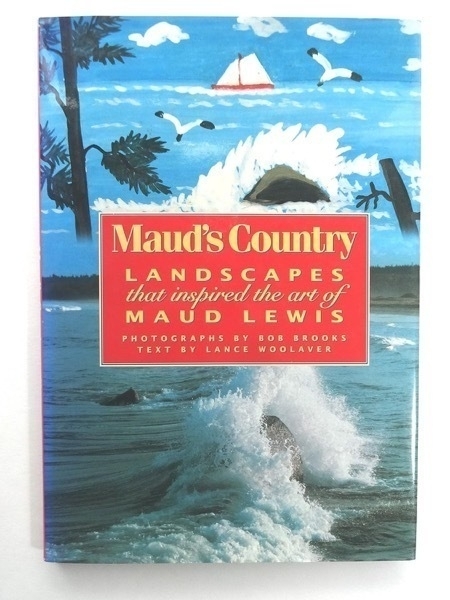Note: Found this draft in my Marsedit folder – yipes! Must be over a year old by the time it sees print. Which makes it at least 2 years older than the previous Nova Scotia books posts. ACK. Lightly edited though it could be much better.
Final post! Almost a year after our trip was done and just before we start the next trip!
The only book 📚 I bought at the tourist shop at Hall’s Harbor, a great restaurant and mainstream gift shop, set in a picturesque postcard. Here’s a live webcam of the harbor.

I bought this book at the gift shop, which did not make me less conflicted about contributing to Nova Scotia’s Maud Lewis Art & Industrial Complex.
By any measure, her life was a hard one. Born with birth defects and rheumatoid arthritis, living in a harsh climate, with a husband who people suspected did not treat her well, in a ridiculously tiny house not built to stand that strong weather. We saw the actual house many years ago, transplanted to a permanent Maud Lewis exhibit in Halifax NS. It seemed an incredibly, ridiculously small dwelling for two people. But considering that they lived on the edge of – if not in – poverty, they lived as thinly as did their neighbors.
The poverty was made somewhat bearable by her discovery of painting and its ability to earn small amounts of money that contributed to keep her and husband Everett in the basics.
Her story was ill-served by the cliched and horribly dishonest movie “Maudie”. While Sally Hawkins’ intelligence and energy ennoble any movie, its portrayal of Everett was highly speculative and that’s not including Ethan Hawke’s awful performance. Look at some of the contemporary accounts of his interactions with reporters and Maud’s customers: he was a talker, a glib salesman, the high-energy front man. He may have been dour and sour behind the scenes, but wouldn’t that have that been more interesting to play?
Not to mention the total dishonesty about Maud’s daughter. Read Maud’s Wikipedia entry and you’ll see a more fascinating and complex story than the fable presented in the movie.
But by all means: buy the “Maudie” soundtrack. A more wonderful and melancholy set of songs I’ve never heard, and we have never tired of hearing it.
Back to the book: it’s a thin one that takes scenes from her art and juxtaposes them with actual pictures of those scenes and landscapes, representing perhaps what Lewis would have seen in childhood or out her tiny home’s window. Quotes dot the book from people who knew her. It’s not a lasting contribution to Maud Lewis’s story, but provides an interesting way to look at how she transformed pictures from life into pictures in paint.